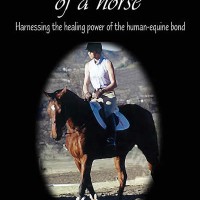So often we are told to visualize what we want, and then our chances of achieving it will be greatly increased. While this idea is easy to understand and based in the study of neuroscience, the reality of it may actually be much more difficult for some people.
Especially when enveloped by self-doubt, fear, and worry, the tendency to second guess the visualization can be quite strong. Yes, we may be able to create the image of what we want — let’s say it is to find the perfect partner — but we will struggle to hold the image. So when the going gets tough, and we tend to doubt our future, we will also question the image itself. Questions like “Can I really find love?” and “Does he/she actually love me?” will ring through our ears.
But actually the ability to visualize — and hold the image — is one that is developed over time. Interestingly, the use of imagery is something that most pet owners do unconsciously. For example, most people who have a dog can recall a time when their dog came and sat by their side right at the very moment they had the vision of a loved person close by. Many dog owners can also share that their dog seems to “know” just right when they are about to walk in the door.
Well we sometimes attribute these events to an animal’s sixth sense, however, there may be more of a shared communication happening. Both dogs and horses (and many other animals) actually communicate visually — as if transmitting pictures of what is occurring. When using these visual cues, a simultaneous physiological response occurs that corresponds to the cue. Just as when a person sees an image of ice cream, and the part of his/her brain that corresponds with taste and pleasure light up.
So for the dog owners, it may have been more likely that right at the time they were close to home, they had an image of a bounding ball of fur greeting them at the door, and the physiological response to this event occurred while approaching home. Their dog, being highly attuned to their physiology, and this form of communication, was able to receive the message that the owner was nearby (and looking forward to seeing him).
Interestingly, visualization is something that is easily practiced with horses. All one needs to do is choose a horse, and an intermediate level activity (such as performing walk-halt or walk-trot transitions on the lunge line, or the lead line), and create a visual image of what one would like to occur.
The stronger the image (in terms of clarity and detail), the better the response. This is to say that the person who can, without a doubt, see the horse doing exactly what he/she wants the horse to do will have the best response from the horse. And one will know the visualization is getting stronger when the horse approximates the desired response more closely.
Slowly, as the ability to visualize improves, so does the relationship with the horse — which, of course, becomes a metaphor for life.
Best,
Claire Dorotik LMFT
